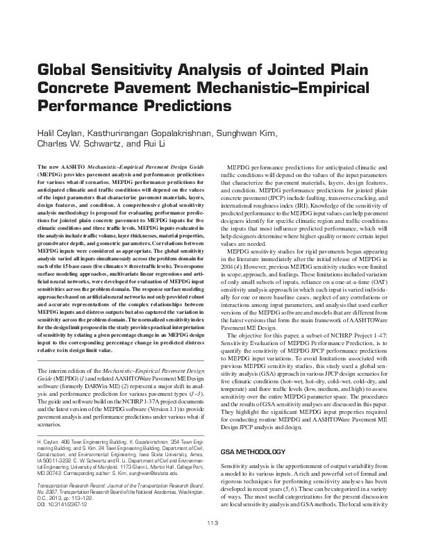
The new AASHTO Mechanistic-Empirical Pavement Design Guide (MEPDG) provides pavement analysis and performance predictions for various what-if scenarios. MEPDG performance predictions for anticipated climatic and traffic conditions will depend on the values of the input parameters that characterize pavement materials, layers, design features, and condition. A comprehensive global sensitivity analysis methodology is proposed for evaluating performance predictions for jointed plain concrete pavement to MEPDG inputs for five climatic conditions and three traffic levels. MEPDG inputs evaluated in the analysis include traffic volume, layer thicknesses, material properties, groundwater depth, and geometric parameters. Correlations between MEPDG inputs were considered as appropriate. The global sensitivity analysis varied all inputs simultaneously across the problem domain for each of the 15 base cases (five climates × three traffic levels). Two response surface modeling approaches, multivariate linear regressions and artificial neural networks, were developed for evaluation of MEPDG input sensitivities across the problem domain. The response surface modeling approaches based on artificial neural networks not only provided robust and accurate representations of the complex relationships between MEPDG inputs and distress outputs but also captured the variation in sensitivity across the problem domain. The normalized sensitivity index for the design limit proposed in the study provides practical interpretation of sensitivity by relating a given percentage change in an MEPDG design input to the corresponding percentage change in predicted distress relative to its design limit value.
Available at: http://works.bepress.com/halil_ceylan/269/

This article is from Transportation Research Record: Journal of the Transportation Research Board, 2367 (2013): 113-122, doi: 10.3141/2367-12. Posted with permission.